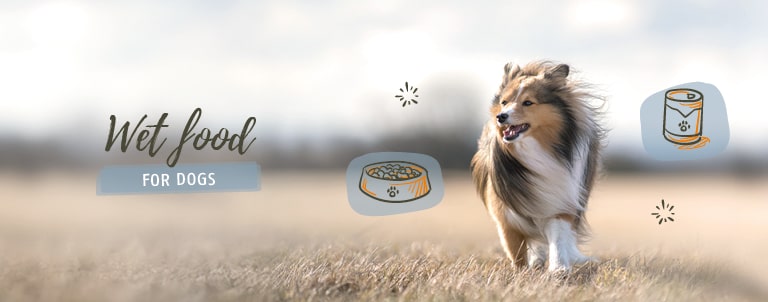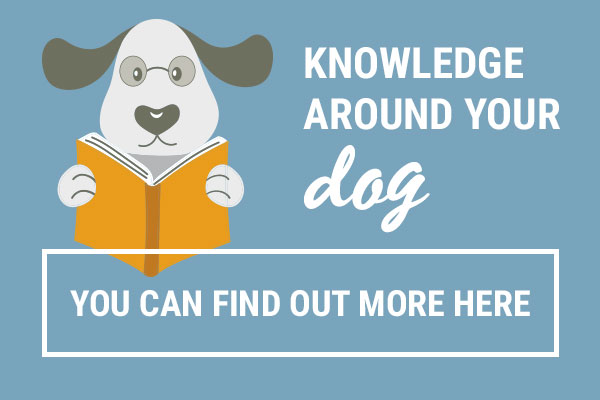-
For dogs
Dog
Shopping cartThere are no products in your shopping cart!
The product has been added to the watch list.
Your selection was successfully placed in the shopping cart.
The product has been added to the watch list.
Your selection was successfully placed in the shopping cart.
Use of cookies
We use cookies to offer you the best shopping experience. These include cookies that are necessary for the operation of the site, as well as optional cookies to optimize our website and generate statistics. Optional cookies are only set after your express consent. You can find all the important information in our privacy policy. The website can also be used without consent.
Legal responsibilities: imprint

Wet food
WET FOOD FOR DOGS FROM VET-CONCEPT
The moist consistency and the intense smell of the cooked meat make it popular for almost every four-legged friend.
The packaging in different can sizes, the high meat content, grain-free compositions and the good storage options also make the products an attractive food choice for pet owners.
Before buying a new wet food, it is important to determine what requirements the dog food should meet. Ideally, this should be based on the age, state of health, weight, size and activity of the four-legged friend in question.
WHAT SHOULD YOU LOOK FOR WHEN BUYING WET DOG FOOD?
It is not uncommon for the large selection of good wet dog food on the market to create uncertainty about the right choice for your own dog.
Vet-Concept focuses on the digestible crude protein. The digestibility of the protein in our products reaches up to 92%. This ensures that the majority of the wet food consumed is digestible.
Only high-quality fish and meat materials, as well as whole grains and vegetables, selected according to food criteria, are used for processing. Pork and genetically modified ingredients are generally not used.
Artificial odours, colours, flavours or chemical preservatives are guaranteed not to be present in our high-quality wet dog food. In addition, we refrain from using sugar and caramel in all our products for the sake of health.
WHICH VET-CONCEPT WET FOOD IS RIGHT FOR MY DOG?
Every dog has different needs. Make your choice based on the individual needs of your four-legged friend and answer the following questions before deciding and ordering one of our high-quality wet foods:
- Is it a puppy, an adult dog or a senior?
- How big is your four-legged friend and do you want him to maintain, gain or lose weight?
- How much regular exercise does your four-legged friend get?
- Are there any illnesses, intolerances or allergies to watch out for?
Alternatively, you are welcome to use the Vet-Concept feed assistant in the online shop or contact our expert advisors to tailor and narrow down the selection to your dog. Experience shows that personal advice on the phone or from your vet achieves the best results here.
FAQ - FREQUENTLY ASKED QUESTIONS ABOUT WET DOG FOOD
WHAT IS THE BEST WAY TO CHANGE THE FOOD?
When a dog owner decides on a new wet food, there is always the question of how best to change the diet.
As responsible advisors, we recommend avoiding a sudden change. This means that the old food should not simply be dropped from one day to the next to be replaced by a completely new food.
Even outwardly insensitive dogs can benefit from a gentle food change. An unpredictable challenge for the gastrointestinal tract does not always have to manifest itself in intolerances, vomiting or diarrhoea.
A sudden change can also lead to fatigue, loss of appetite or restlessness. Many pet owners do not always attribute these symptoms to the diet, but they can certainly be promoted by a too rapid change of diet.
In order not to unnecessarily challenge the gastro-intestinal system, it makes sense to let the new food sneak in slowly. To do this, replace an increasing amount of the old food with the new food over a period of 5-7 days.
If your four-legged friend needs a new food for health reasons and is sceptical about it, make sure to offer him only minimal amounts between his normal meals during the first trial feedings. This way, the old food, which was previously well accepted, will not be made unpalatable by negative surprises in the bowl.
If you have any questions about further tips and tricks for changing your dog's food, please do not hesitate to contact our Vet-Concept advisors.
HOW RELIABLE ARE THE RECOMMENDED FEEDING AMOUNTS?
When feeding wet dog food, you should always follow the manufacturer's feeding recommendations.
This is because analytical evaluations of the food and the latest scientific findings on the nutrient requirements of dogs mean that very precise information can be provided for modern dog foods on how much food a four-legged friend should eat on average.
Depending on the dog's metabolism, the recommended amount of food for Vet-Concept wet food can be reduced or increased by up to a third of the recommendation in order to meet individual needs.
CAN I JUST FEED MY DOG DIET FOOD?
The term diet food must be defined more precisely in order to answer this question. In the daily consultation on dog food, it is often noticed that diet food is usually understood as low-fat food.
However, the term diet generally describes an adapted diet due to various illnesses or peculiarities. This means that a special diet may also be necessary if the dog needs to gain weight instead of losing weight or is dependent on a protein-reduced diet (e.g. in the case of kidney insufficiency).
Switching to a diet can often help sick or allergic dogs. However, it can also make healthy dogs ill if the wrong food is chosen or if they do not need it. Feeding diet food should therefore always be discussed with the vet treating the dog.
ARE GRAIN-FREE FOODS GENERALLY BETTER?
This question is asked very often in daily nutritional counselling for dogs. Modern dog owners ask themselves why the dog, as a descendant of the wolf, should eat grain. In itself, this idea is quite understandable. However, wolves also ingest pre-digested carbohydrates through the stomach and intestinal contents of prey.
If we look more closely at the development of the dog over the last centuries, it was domesticated by humans. This means that it became common practice in human society to adapt the diet of our four-legged companions to our own.
According to the latest nutritional findings, the dog has acquired the ability to digest starchy food. What's more, grains such as maize, rye, oats, spelt and wheat provide dogs with important nutrients such as minerals, vitamins, fats and trace elements.
Meanwhile, feeding only protein-rich meat can put a strain on the metabolism and detoxification organs (liver and kidneys) of today's domestic dog.
WHICH WET DOG FOOD IS SUITABLE FOR PUPPIES?
During the first 4 weeks of a dog's life, mother's milk is the best food. In the 3rd and 4th week of life, pet owners usually notice that the right time has come to start feeding the puppies dog food.
Particularly in the first six to eight months of life during the main growth phase, puppies need a precisely balanced energy and protein supply.
When feeding puppies, Vet-Concept also recommends taking a close look at the individual dog. The adult weight to be reached, the individual development and the dog breed can provide decisive information for the right choice of food.
Feeding puppies should promote steady, even growth and provide all the important nutrients in a readily digestible form. Rapid growth should be avoided at all costs in order to protect bones and joints. Easily digestible protein sources from high-quality meat materials, such as lamb or poultry (e.g. Soft Premium Wet Chicken) are ideal for this purpose.
HOW CAN I TELL THAT MY DOG IS NOT TOLERATING THE FOOD?
After feeding a new food, you should generally observe how the dog reacts to it. An intolerance to previously unfed ingredients or products can manifest itself in various ways.
For example, a new food can irritate the stomach and is therefore usually vomited up by the dog on the day of feeding.
If components of the wet food are not tolerated, the dog's intestine usually reacts with diarrhoea or flatulence.
Itching, rashes or hair loss can also be indicators of intolerance. Skin reactions are often not seen until days after the dog has actually been fed the food that caused the reaction. It is therefore advisable to introduce only one new item into the diet at a time. This way it is relatively easy to see whether new food is well tolerated.
In case of intolerances, a smaller, more easily digestible amount of the wet food or a wet food made from other ingredients should be offered at the next feeding.
HOW IMPORTANT IS THE MEAT CONTENT IN WET FOOD?
According to legal requirements, the exact meat content in dog food does not have to be shown by manufacturers. However, it is increasingly being used by dog owners as a measure of the quality of a dog food. Basically, dog owners should know the following:
Wet food is traditionally made from fresh meat and therefore has a high water content. The nutrient density in wet food is therefore less than in dry food. Accordingly, comparatively much more wet food must be fed to cover the daily requirements than when feeding dry food.
According to legal requirements, dried meat must be processed in dry food. This means that water is removed from the fresh meat before processing. This results in a highly nutritious and concentrated meat meal.
Due to the high concentration of nutrients in the meat meal, less meat meal is needed to produce a requirement-covering dry food than would be needed of fresh meat. This means that the nutrient density in meat meal is higher than that in fresh meat.
The indication of the meat content is therefore a purely percentage indication, which has little significance with regard to the quality of the dog food.
Dog owners should rather pay attention to the analytical components - especially the digestible crude protein - of a complete feed in order to see the true quality of the food.
what we do!










